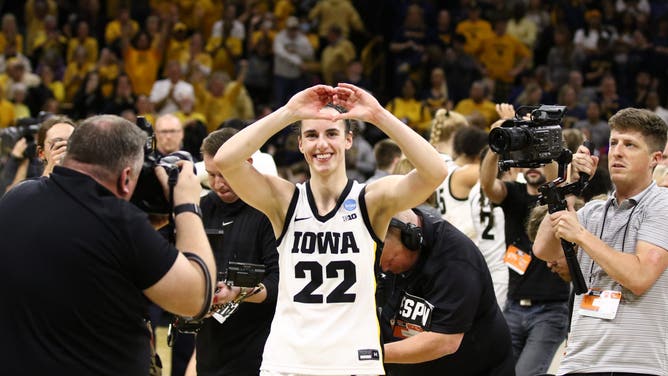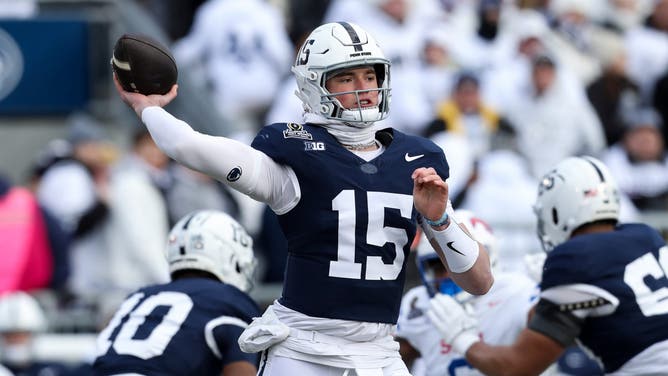Department Of Education Throws A Wrench Into NCAA Revenue Sharing Model With Title IX Rules Memo
On Thursday, the United States Department of Education civil rights office put out a memo clarifying some of the new rules pertaining to NIL payments and how Title IX will have a major impact on how athletes are paid moving forward.
Mind you, a lot of this can change over the next year, as a new regime will be welcomed into the White House, which could have a major impact on how some of the ‘rules’ are going to be interpreted.
There have been a lot of questions surrounding the new revenue-sharing model that is projected to be approved in the coming months, paving the way for schools to start paying athletes from within their own athletic department. Right now, these payments to athletes are mostly coming from outside third-party collectives, which are not legally conjoined with universities.
One of the most important parts of the nine-page memo that was released on Thursday pertains to how revenue shared with student athletes is going to be classified in this new era. Going forward, money that is paid from the school to an athlete will be viewed as ‘financial assistance’, and if they are not proportionally divided, every participating school could be violating federal Title IX laws.
TO READ THE FULL MEMO PERTAINING TO TITLE IX AND NCAA REVENUE SHARING, CLICK HERE.
"If a school awards athletic financial assistance, the Title IX regulations require the school to "provide reasonable opportunities for such awards for members of each sex in proportion to the number of students of each sex participating in interscholastic or intercollegiate athletics," the memo states.
"The regulations do not require the same number of awards for male and female student-athletes or that individual awards be of equal value."
Right now, every school that participates in the revenue-sharing model hinges on the House v. NCAA settlement will be working with a cap of around $20.5 million per year that will be divided up between diferent athletic programs on campuses across the country. While a majority of athletic departments were planning to provide anywhere between $14 to $17 million for their football programs, this could seriously be altered with the new guidance from the Dept of Education.
One of the areas that has been discussed the most is the inclusion of third-party collectives moving forward.
Collectives Not Violating Title IX Laws By Paying Athletes Differently
The term ‘collective’ has made a massive impact on the NIL world over the past four years. Since the inception of Name, Image and Likeness, these third-party groups have been funding rosters across a plethora of sports on college campuses. While they are not technically using university money, these ‘collectives’ are working with athletic departments to put together rosters, while paying student-athletes that have a market value, and can possibly present a return on investment.
Now, the Department of Education has made it clear in their memo that they do not view the money being paid by these collectives as a violation of Title IX.
"Compensation provided by a school for the use of a student-athlete’s NIL constitutes athletic financial assistance under Title IX. By contrast, OCR does not view compensation provided by a third party (rather than a school) to a student-athlete for use of their NIL as constituting athletic financial assistance awarded by the school that must comply with 34 section."

IOWA CITY, IOWA - Guard Caitlin Clark of the Iowa Hawkeyes gestures to the crowd as she leaves the court after the game against the West Virginia Mountaineers during their second round match-up in the 2024 NCAA Division 1 Women's Basketball Championship at Carver-Hawkeye Arena. (Photo by Matthew Holst/Getty Images)
This means, going forward, third-party collectives do not have to worry about any sort of violation of federal or civil rights laws.
All of this in the memo released on Thursday is pertinent in how universities will handle revenue-sharing with student athletes moving forward. Schools have been preparing for the new revenue-sharing model for the past year, thinking that most of their current setups would not violate Title IX laws, but that could be about to change.
Athletic Departments Were Preparing To Allocate Most Funds To Football
The biggest concern now is that athletic departments have been putting together plans to share upwards of 70 percent to 75 percent of their allocated money to the football team, but this memo puts those plans in flux. When the Dept. of Education said that the money must be shared proportionally between men and women student-athletes, this move would change everything.
In simpler terms: If the athletic department is going to pay the starting linebacker $200,000 a year, they need to be prepared to have the same type of payment go towards a female student-athlete. This is going to lead to third party collectives still being heavily involved moving forward, if this memo is not altered by the new regime in Washington, DC.

University Park, Pa. - Penn State Nittany Lions quarterback Drew Allar throws a pass during the first quarter against the Southern Methodist Mustangs in the first round of the College Football Playoff at Beaver Stadium on Dec. 21, 2024. Photo: Matthew O'Haren-Imagn Images
The other problem for schools could be them trying to skirt around the laws, meaning that if an outside source is creating some type of obvious disparity, this could be a move that forces schools to take care of their obligations to Title IX. Meaning, that $400,000 in extra money from a third party collective to a male athlete could force them into a tricky situation within federal guidance of how to allocate funds.
All of this could either be changed or altered in some way once the Trump regime gets underway. So, all of this will continue to be monitored, especially the schools looking for federal guidance, without a lot of time left on the clock.